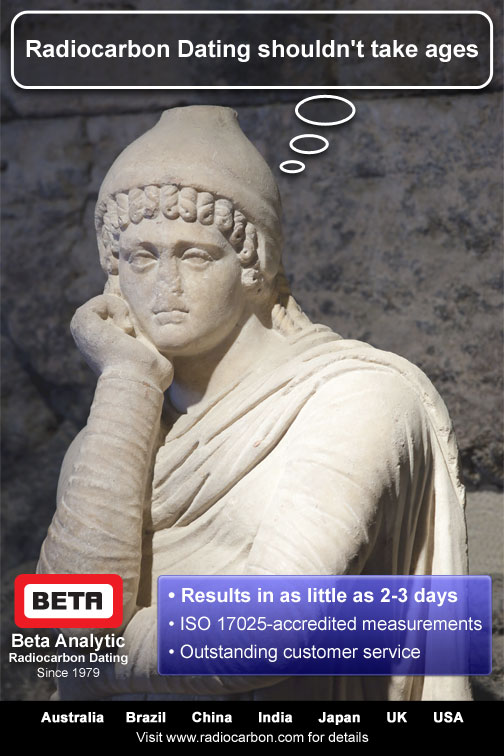Radiocarbon Dating Shells – Localized vs Global Marine Reservoir Correction
Thursday, November 14th, 2013
There are two possible reservoir corrections applied to a radiocarbon date for marine carbonates – the localized reservoir correction (Delta±R) and the global marine reservoir correction. The former is provided by the client to the lab before the analyses while the latter is part of the calibration program.
The global marine reservoir correction is automatically applied via the Marine IntCal13 calibration program based on the age of the sample. This correction ranges between -200 to 500 years. These values take into account that it takes 200-500 years for present-day carbon dioxide in the atmosphere to be incorporated and distributed (equilibrated) through the ocean water column.
2021 UPDATE: The current databases used are IntCal20 (northern hemisphere), SHCal20 (southern hemisphere) and Marine20 (marine environments).
Delta±R can additionally be applied to samples of marine shell fish based on certain geographic areas of the globe. This value varies from location to location based on localized upwelling, fresh water runoff and other conditions related to depth, circulation, salinity, etc.
A Delta±R correction is applied to a radiocarbon date that has already been corrected with the global marine reservoir correction. The value provided by the client is subtracted or added to this already corrected age (depending if it is a Delta+R or Delta–R value).
How to Determine the Delta±R Value
If the sample is marine, please visit www.radiocarbon.com/m to get the Delta±R value for the general geographical region of your site and email the value to the lab. Please note that the lab also needs the DeltaRErr value, without this number the Delta-R value is invalid.
When on the site, you can zoom in closer using the bar on the left of the screen. You can right-click and drag to center the map on your location. When your area is centered and zoomed in to a few hundred miles, please left-click on your sample location and a green point should show up. Click GET DATA. A table with the 10 closest known points will appear. You can check off just one value from the table or check off several in the table. Please look at the distances these spots are from your site. Some points may be quite far from your site and not relevant. Unfortunately we cannot tell you how close a value should be to be relevant to your area. You can now click on CALCULATE AVERAGE OF TICKED BOXES. If there are no points close to your site, let us know and we will NOT use a local correction but will still use the global marine correction.

SEND SAMPLES |
|---|
| Contact us for prices |
| Prepare Sample |
| Submit Data Sheet Online |
| See Shipment Guidelines |
| Shipping Addresses |
Carbon 14 Dating ServiceWould you like us to track your package? Are you filling out the online form? Read about sample material return Beta Analytic Other Services- d13C and d15N - d18O for carbonates - d2H and d18O for water |
Terms and Conditions



